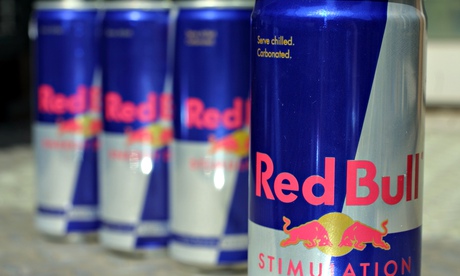Noncommunicable diseases, what are they?
Noncommunicable diseases (NCDs), also known as chronic diseases, are not passed from person to person. They are of long duration and generally slow progression. The four main types of noncommunicable diseases are...
Energy Drinks Review
“The full impact of the rise in popularity of energy drinks has not yet been quantified, but the aggressive marketing of energy drinks targeted at young people, combined with limited and varied regulation have created an environment where energy drinks could pose a significant threat to public health.”
The Evolution of Obesity
During the history of human evolution the process of accumulation of body fat was being selected because it was beneficial in an environment where food was scarce and the periods in which...
EPHA highlights on the Vienna Conference on Nutrition and NCDs
At the WHO European Ministerial Conference on Nutrition and Noncommunicable Diseases in the Context of Health 2020, held in Vienna, Austria on 4-5 July 2013, European Ministers of Health renewed their commitment to fight the obesity and poor nutrition-related rise in non-communicable diseases by adopting a declaration calling for evidence-based solutions from across the Region - the so-called Vienna Declaration.
About StopNCD's
The aim of the project is to create awareness on this matter and share information, between professionals and also to the major public.
Monday, January 5, 2015
Overweight children displayed poorer asthma control than lean children
Sunday, January 4, 2015
150 MILLION EUROPEANS ARE ‘TRAPPED’ BY ALLERGY
Raising awareness about allergic diseases: Asthma
According to experts, 1 out of every 3 children have an allergy and they expect the disease to affect more than 50% of all Europeans in 10 years’ time.
Allergic diseases can limit activities and lower the quality of life, particularly when they coexist in the same individual. Apart from individual suffering allergic diseases present a very high socioeconomic burden to patients and families.
"The European Academy of Allergy and Clinical Immunology (EAACI) has launched an awareness campaign to help the society to better understand how allergy sufferers feel, how profound allergy impacts quality of life, how severe and costly the diseases can become and how important is to diagnose early and better manage this disease."
- Nikos Papadopoulos, EAACI President
- asthma and other allergic diseases run in families
- many patients are aware of allergic triggers for their asthma (house dust mites, animal dander, molds)
- atopic eczema is often the first sign that the child has an atopic phenotype and may develop rhinitis and asthma when they grow up
- childhood wheeze often persists into asthma if an allergic background is present
- 75% of adults with asthma have allergic rhinitis
- 50% of people with allergic rhinitis have asthma
- treating rhinitis may improve asthma symptoms, especially cough
Word from EAACI's Asthma Section The reasons behind asthma are not well understood, however people with allergic rhinitis, atopic eczema, food allergy and those who have asthma running in the family are at risk of developing asthma. You may have asthma if you experience recurrent episodes of coughing, wheezing, breathlessness and chest tightness. The complaints may be triggered by colds, exposure to cigarette smoke, air pollution and / or allergens such as house dust mites, grass pollens, cats, etc. The symptoms increase, decrease or disappear from time to time.
Allergic asthma is considered a special phenotype and composes about 80% of cases in children and 40% in adults. Children with allergic asthma may have more severe and persistent disease and both adults and children with allergic asthma may benefit from a specific form of treatment called allergy vaccines. The majority of people with asthma can be controlled by environmental measures and asthma medications. A small percentage, around 5 % of all cases especially in adults, may have severe asthma and can be difficult to control with the traditional approach.
In recent years, there have been important advances in this field and there are now specific medications for people who do not respond to the regular treatment. These treatments are generally aimed at blocking certain substances that may specifically be responsible for severe asthma in selected patients. For the patient this means that asthma can now be controlled even in more severe forms of the disease.
Asthma is a chronic but controllable disease and persons with asthma can have a normal, active life with no restrictions. The important thing is to recognize and treat the disease.
About EAACI
The European Academy of Allergy and Clinical Immunology, EAACI, is a non-profit organisation active in the field of allergic and immunologic diseases such as asthma, rhinitis, eczema, occupational allergy, food and drug allergy and anaphylaxis. EAACI was founded in 1956 in Florence and has become the largest medical association in Europe in the field of allergy and clinical immunology. It includes over 8,000 members from 121 countries, as well as 47 National Allergy Societies.
Thursday, January 1, 2015
Energy drinks could cause public health problems, says WHO study















